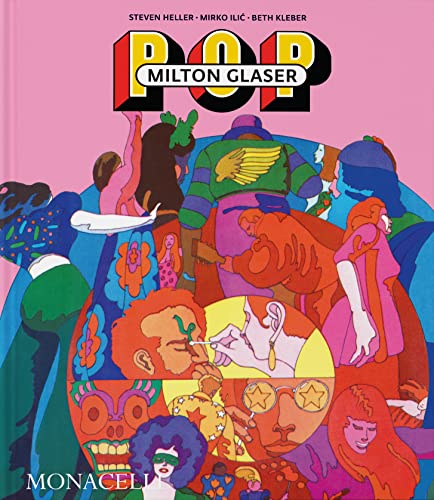Milton Glaser, POP

“may actually be the best book of his work, celebrating a commercial artist having fun with his assignments before entering the stage in his career that made him one of the great designers of the 20th century.”
It seems rather fitting that a few days after the much-contested and rather tragic reimagining of Milton Glaser’s iconic I <3 NY logo was revealed that a book containing his least favorite period within his career would hit the market. March was not a kind month for Milton. However, unlike We <3 NYC, Milton Glaser, Pop is a fitting tribute to the mid-century maestro of American illustration.
Glaser never shied away from critiquing his own work. In Milton Glaser Posters (2018), he points out which in his oeuvre of over 400 designs fell flat. He knew what projects landed and which didn’t—and that level of self-awareness is so keenly needed in a time of neverending accolades for even the most mediocre of compositions. Regarding his “pop” period, however, he couldn’t have been more wrong.
Pop is a bit of a misnomer for what Glaser produced in the 1960s. More a reaction against the saccharine nostalgia of illustrators like Norman Rockwell, Glaser’s imagery was a more accessible interpretation of psychedelia. Unlike the West Coast artists working for the likes of Bill Graham, Glaser’s designs were profoundly legible but still contained elements of whimsy and humor—all in a vibrant, modern color palette. The fact that commercial artists began copying this style (and poorly at that) made him all the more eager to leave his 1960s period behind.
This book, however, unveils the revolutionary nature of Glaser’s approach to selling a product, be it a fresh take on a vinyl record of Bach’s greatest hits or a fever dream of an ad for Canada Dry. Unlike much promotional material from the period, his compositions still feel fresh and fun rather than dated. They aren’t pigeonholed into a specific genre enough to blend in with our collective unconscious of the 1960s, yet so many of them feel familiar. This ability to tap into simple visuals that could both intrigue and delight would carry through the rest of his career, but it is important to remember that it began here.
Included are early album covers, book jackets, sketches, print ads, magazine illustrations, posters, stationary, and all manner of ephemera drawn from his archive at the School of Visual Arts in New York City and the personal archive of Mirko Ilic, one of the three authors. And the most remarkable part is that this collection of over 1,000 designs is only scratching the surface of those collections. We yearn for part two!
With literally over a dozen books on Milton Glaser already on the market, it seemed unlikely that this compilation could bring anything new to understanding him as a designer; however, like his own opinion of his work from this period, that assumption is flat-out wrong. Milton Glaser, Pop may actually be the best book of his work, celebrating a commercial artist having fun with his assignments before entering the stage in his career that made him one of the great designers of the 20th century.